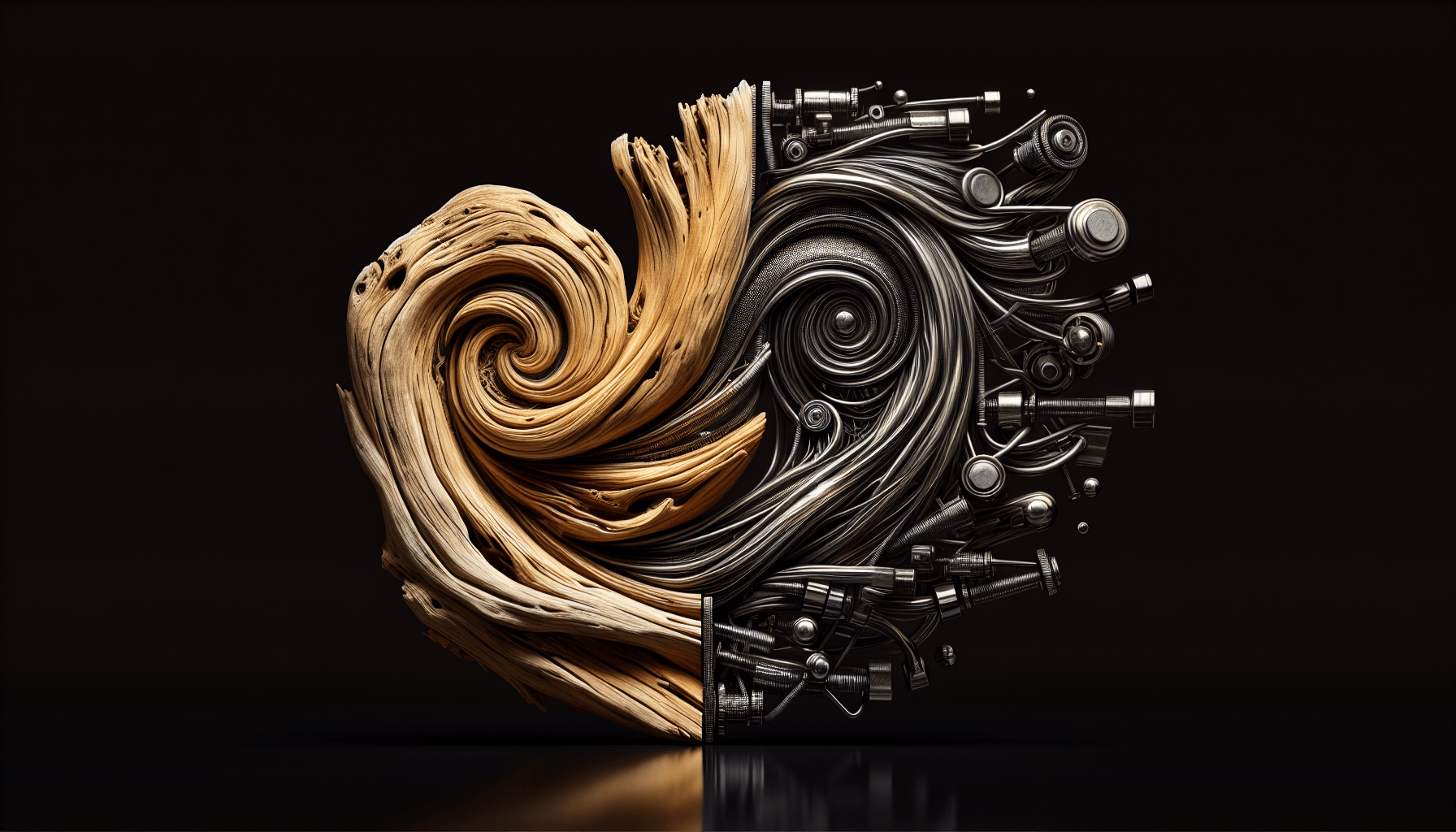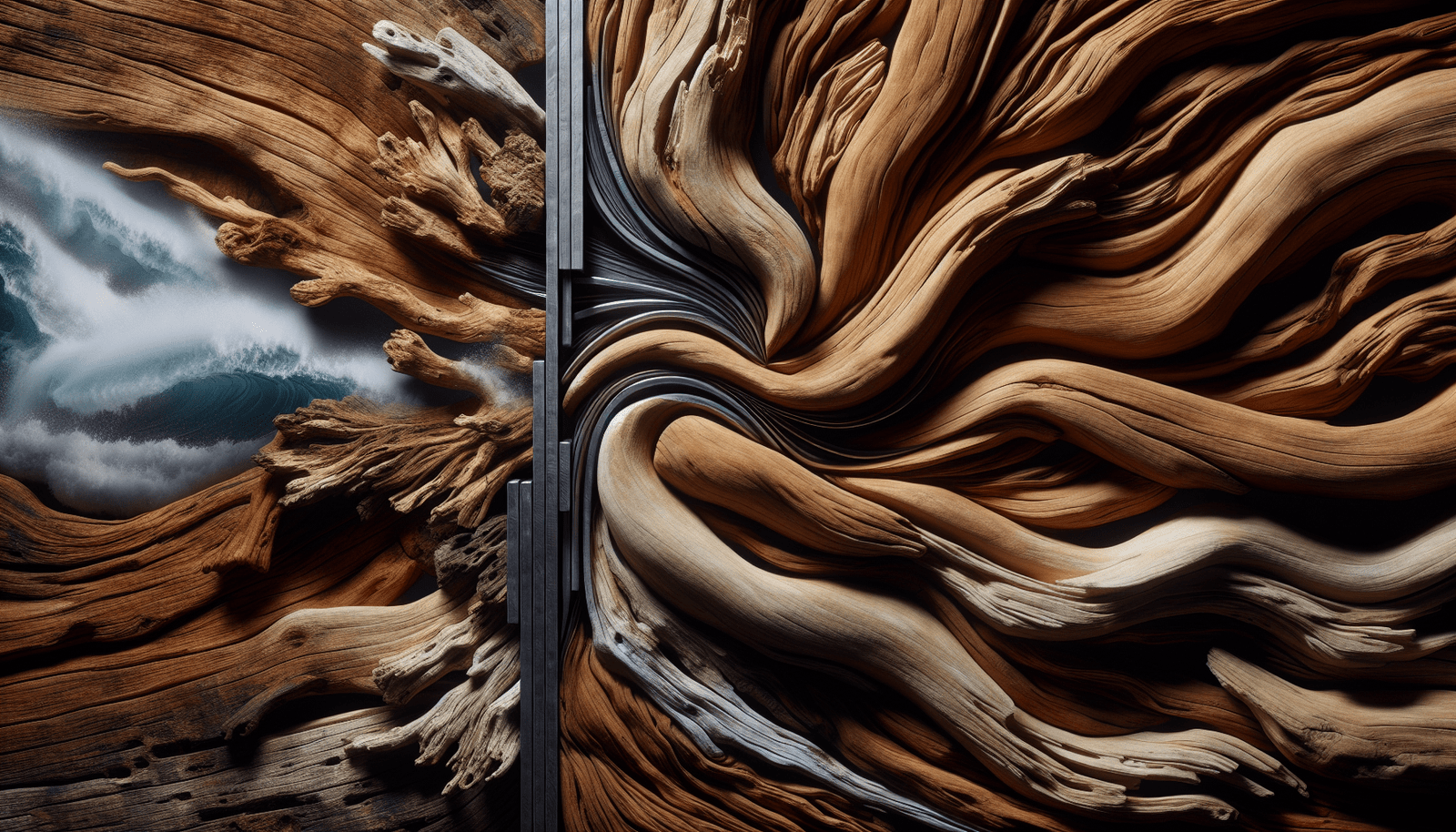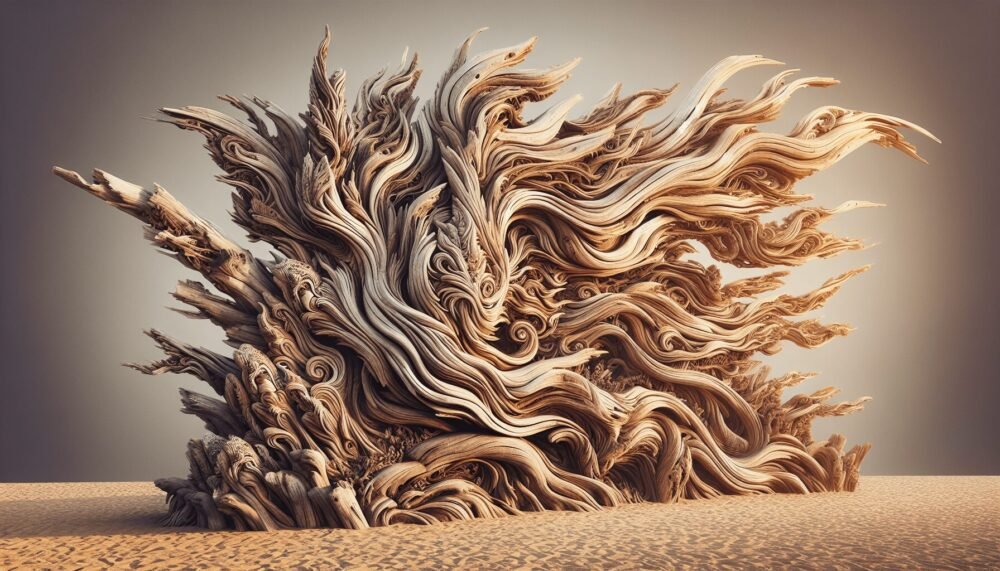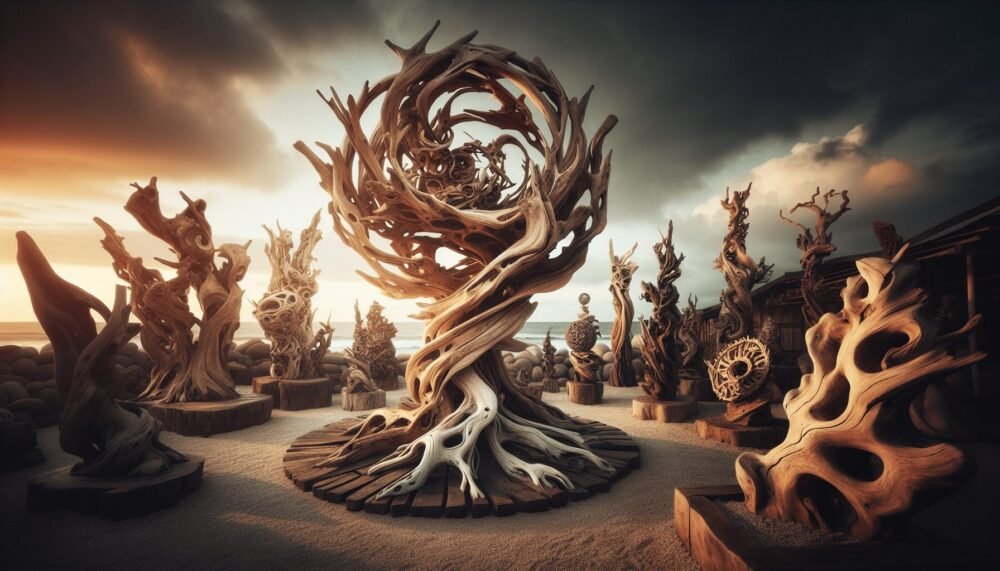Have you ever wandered along a beach and come across pieces of driftwood, their unique shapes and textures provoking a sense of wonder? What if you could transform such simple, natural materials into a stunning piece of art by combining them with metal? Driftwood metal sculpture can bring together the elegance of wood worn by time and nature with the strength and shine of metal. It’s a unique combination that allows you to create one-of-a-kind pieces that capture a part of nature’s story while also expressing your own artistic vision. Let’s dive into the fascinating world of driftwood metal sculpture and see how these unlikely materials can be married into spectacular forms of art.
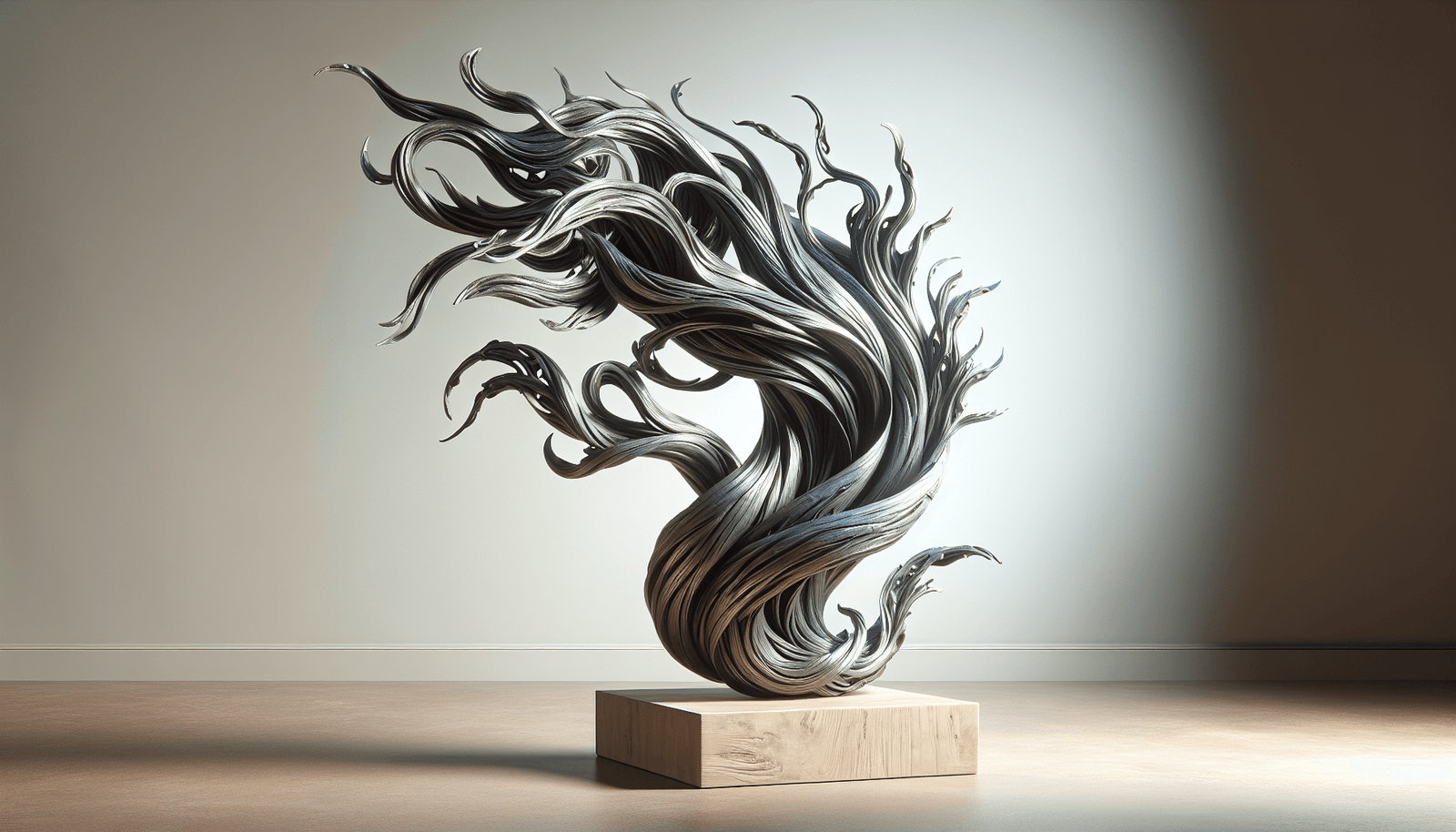
Understanding Driftwood Metal Sculpture
Driftwood metal sculpture is a creative art form that fuses the organic texture and shape of driftwood with the robustness and luster of metal. This type of sculpture allows for an exploration of both nature and human craftsmanship as it brings out the best of both worlds. Each piece of driftwood, having been sculpted by the sea, tells its own story through its distinct forms, which are enhanced by the cool and modern feel of metal elements. The pairing creates an interesting contrast and harmony simultaneously.
The Elements: Driftwood
Driftwood, made smooth and twisted by its journey through water, has an intrinsic, raw beauty. It’s both a material and a testament to the power of nature, sculpted by currents and tides over time. The unique shapes, grains, and textures give each piece a distinctive character. Artists find driftwood particularly attractive due to its unpredictability and natural charm. Each piece carries with it a history and a mystery, making it a special element for artistic expression.
The Elements: Metal
Metal components introduce a sturdy, industrial element to sculptures, providing a perfect counterbalance to the organic nature of driftwood. Metals such as steel, copper, or aluminum are often used, with each offering its own texture and characteristics. While driftwood is earthy and irregular, metal can be manipulated into precise shapes, polished to a shine, or left to rust for a rustic look. This versatility allows artists to experiment and play, crafting pieces that are both dynamic and cohesive.
The Appeal of Driftwood Metal Sculpture
Driftwood metal sculptures are popular for their aesthetic and symbolic value. They embody the delicate balance between nature and industrialism, fragility and strength, decay, and permanence. Their appeal lies in their ability to evoke emotion and provoke thought, as well as their stunning visual attributes. These sculptures can serve as enchanting focal points in homes or public spaces, offering both complexity and beauty that captivate onlookers.
Symbolism and Metaphor
The combination of driftwood and metal can serve as a metaphor for life and the seamless integration of the organic with the mechanical. It symbolizes resilience, transformation, and the interconnectedness of all things. Driftwood’s journey through nature, coupled with human-forged metal, tells a story of adaptation and harmony, making these sculptures a significant addition to any collection.
Aesthetic Features
Aesthetically, driftwood metal sculptures offer an intriguing juxtaposition of textures and forms. The weathered, grainy surface of driftwood contrasts with the smooth, shiny or matte finish of metal, creating visual interest. The varied colors, from the earthy tones of wood to the metallic sheen or patina of metals, enhance the sculpture’s appeal, attracting viewers and art collectors alike.
Crafting Driftwood Metal Sculptures
Designing driftwood metal sculptures involves a blend of artistry and skill. The process requires careful selection of both components to ensure they complement each other and form a coherent piece. It is both an art and a craft, demanding creativity, precision, and patience.
Sourcing Driftwood
Finding the right piece of driftwood is often the first and most crucial step. Artists typically collect driftwood from beaches, riversides, or lakeshores, always mindful of local regulations about collecting natural materials. Each piece needs to have a unique shape and texture that can be transformed into a part of a greater whole. Consideration of its size, grain, natural color, and condition is essential to ascertain its suitability for incorporation into a sculpture.
Choosing the Metal
After selecting the driftwood, choosing the appropriate metal is next. The type of metal chosen should harmonize with the driftwood’s characteristics while also enhancing the sculpture’s overall form. Common metals used include:
- Steel: Durable and versatile, capable of various finishes from polished to rusted.
- Copper: Known for its distinctive reddish-brown hue, it develops a natural patina over time that can add character.
- Aluminum: Lightweight and resistant to corrosion, often used for modern-looking sculptures.
Tools and Techniques
Creating a driftwood metal sculpture requires specific tools and techniques. Artists often employ welding, cutting, and polishing tools for shaping and joining metal components. Woodworking tools may be needed to shape the driftwood, though often it is left largely in its natural state to preserve its authenticity. Jointing methods may involve fastenings or adhesives specifically designed for mixed materials.
Design and Composition
The design of a sculpture starts with a vision. Mapping out the sculpture through sketches or digital models helps clarify the concept and design direction. Balancing the elements—deciding where metal’s rigidity and the fluidity of wood will meet—is key to creating a cohesive piece. The composition must be carefully arranged to balance weight, form, and structure, making sure each element complements the other without overshadowing.
Display and Care
Once the driftwood metal sculpture is complete, displaying it becomes an art in itself. These sculptures can serve as stunning focal points, both indoors and outdoors, necessitating thoughtful placement to maximize their visual and aesthetic impact.
Indoor Display Considerations
Indoors, lighting plays an essential role in showcasing the sculpture’s intricate details and contrasting materials. Spotlights or natural lighting can highlight the uniqueness of both the wood and metal elements. It’s crucial to choose a space that draws attention yet complements the existing décor, ensuring the sculpture remains a standout feature.
Outdoor Exposure
For outdoor displays, durability and resistance to elements are crucial. The type of metal and its finish will influence how the piece weathers over time. Protective coatings can help preserve the sculpture’s integrity against the elements while allowing the natural patina of the materials to evolve.
Maintenance
Caring for driftwood metal sculptures involves regular cleaning and inspection. Driftwood might need periodic treatment against pests or decay. Metal components may require anti-corrosion treatments or polishing to maintain their intended appearance. Regular care ensures the sculpture remains a beautiful and lasting piece of art.
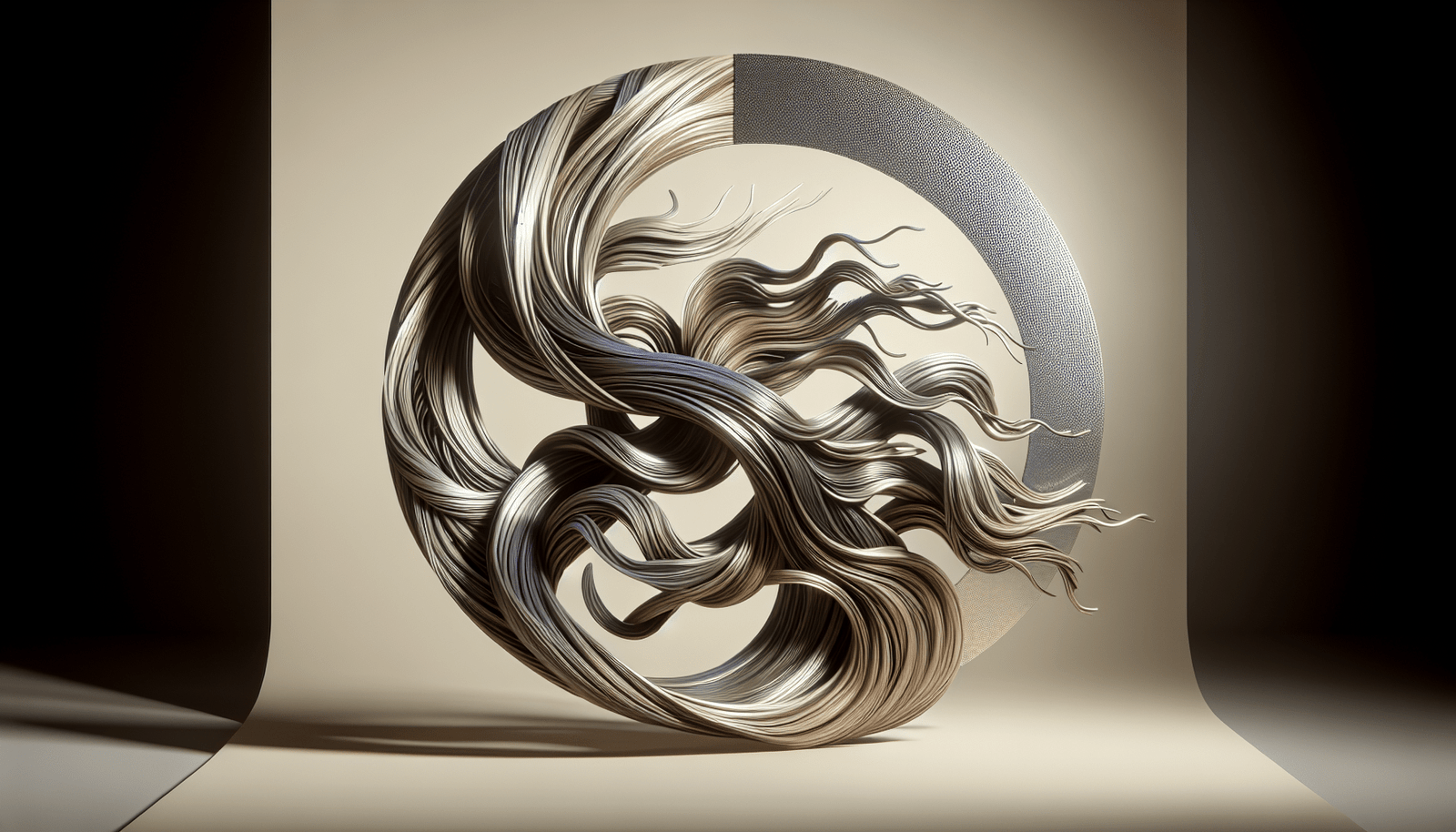
Inspiring Artists and Their Work
Several artists have gained recognition for their exceptional driftwood metal sculptures. They bring their unique perspectives, styles, and techniques, adding diversity to this art form. Their work is celebrated for its creativity, precision, and narrative storytelling through natural signs and industrial touches.
Notable Artists
- James Doran-Webb: Known for his life-size animal sculptures, Doran-Webb fuses driftwood with metal to create dynamic, lifelike representations that capture movement and emotion.
- Deborah Butterfield: Butterfield’s horse sculptures are famous for using the shapes of driftwood to form equine figures subtly accented with metal, celebrating the form and spirit of the animal.
Their Techniques and Influences
These artists often speak of their connection to nature and interest in ecology as significant influences on their work. Techniques vary but often involve meticulous planning and experimentation to achieve the desired aesthetic and structural balance. Through their sculptures, they inspire others to appreciate the natural world and see beauty in unexpected combinations.
Exploring Your Creative Potential
Creating your own driftwood metal sculpture can be a rewarding experience that taps into your artistic potential and appreciation for nature. Even if you’re new to sculpting, understanding the basic principles and letting inspiration guide you can lead to the development of a unique piece of art.
Tips for Beginners
- Start Small: Begin with a simple project to grasp the basic techniques and build confidence.
- Experiment with Materials: Try different types of driftwood and metals to discover combinations that appeal to you.
- Learn from Masters: Study works by accomplished artists and understand their techniques and choices.
Finding Inspiration
Look around you for inspiration. Nature is abundant with patterns and designs that can spark creativity. Consider how the materials speak to you and the story you want to convey through your sculpture. Attend art exhibits or workshops to meet other enthusiasts and learn from their experiences and journeys.
Conclusion
Driftwood metal sculpture is a captivating art form that brings together the unpredictable beauty of nature and the precision of human craftsmanship. It offers artists and viewers alike the chance to explore the relationship between two contrasting materials, creating works that are both intriguing and meaningful. Whether you are an artist looking to create your own pieces or an enthusiast seeking to appreciate them, driftwood metal sculpture represents a fascinating intersection of art, nature, and human expression. It’s a testament to the creative possibilities that await when you look beyond the ordinary and embrace the extraordinary in both material and concept. So next time you come across driftwood washed ashore or see a piece of metal gleaming in the sunlight, consider the potential stories waiting to be told.
